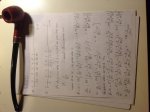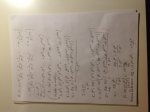Kagankarakoc
New member
- Joined
- Jul 17, 2013
- Messages
- 12
Hello, I need your help.. Thank you
Present values amounts are equal of 2 infinite series. The payments are "end of period annuites". First serie: the payments are 100 USD for the first 2 years, for the the following two years are 200 USD, for the following 2 years are 300 USD, and it continues like this to infinity. Second serie : the payments are P for the first 3 years,for the the following three years are 2P, for the following threeyears are 3P, and it continues like this to infinity. what is the value of P?
Present values amounts are equal of 2 infinite series. The payments are "end of period annuites". First serie: the payments are 100 USD for the first 2 years, for the the following two years are 200 USD, for the following 2 years are 300 USD, and it continues like this to infinity. Second serie : the payments are P for the first 3 years,for the the following three years are 2P, for the following threeyears are 3P, and it continues like this to infinity. what is the value of P?



